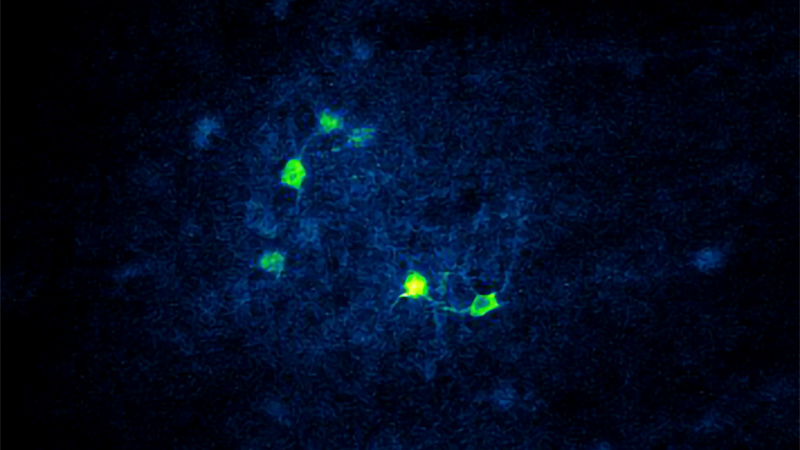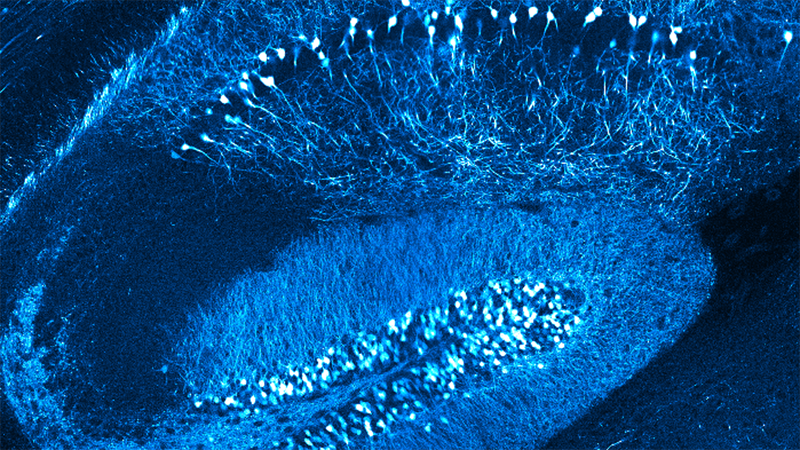

Causal Coupling Between Neural Activity, Metabolism, and Behavior Across the Drosophila Brain
Discover novel applications of two-photon microscopy and optogenetics.
Topics discussed will include:
- Our guest presenter's latest research combining two-photon microscopy with local optogenetic perturbation;
- Four experimental methods to study the dependence of neuronal activity on metabolic flux in intact circuits on the timescale associated with behavior;
- Insights into the relationship between neural activity and energy metabolism; and
- A Q&A session with our guest speaker about his research and essential considerations for experimental design.
Presenter's Abstract
Coordinated activity across networks of neurons is a hallmark of both resting and active behavioral states in many species. These global patterns alter energy metabolism over seconds to hours, which underpins the widespread use of oxygen consumption and glucose uptake as proxies of neural activity. However, whether changes in neural activity are causally related to metabolic flux in intact circuits on the timescales associated with behavior is unclear.
Here, we combine two-photon microscopy of the fly brain with sensors that enable the simultaneous measurement of neural activity and metabolic flux, across both resting and active behavioral states. We demonstrate that:
- Neural activity drives changes in metabolic flux, creating a tight coupling between these signals that can be measured across brain networks.
- Even transient increases in neural activity result in rapid and persistent increases in cytosolic ATP, which suggests that neuronal metabolism predictively allocates resources to anticipate the energy demands of future activity (using local optogenetic perturbation).
- The initiation of even minimal behavioral movements causes large-scale changes in the pattern of neural activity and energy metabolism, which reveals a widespread engagement of the brain.
As the relationship between neural activity and energy metabolism is probably evolutionarily ancient and highly conserved, our studies provide a critical foundation for using metabolic proxies to capture changes in neural activity.
Learn more about Bruker's multiphoton microscopes or our other solutions for the investigation of neural and metabolic networks:
SEE MORE OF THIS PRESENTER'S RESEARCH:
- Mann K, Deny S, Ganguli S, Clandinin TR. Coupling of activity, metabolism, and behavior across the Drosophila brain. Nature. 2021 May;593(7858):244-248. doi: 10.1038/s41586-021-03497-0.
- Turner MH, Mann K, Clandinin TR. The connectome predicts resting-state functional connectivity across the Drosophila brain. Curr Biol. 2021 Jun 7;31(11):2386-2394.e3. doi: 10.1016/j.cub.2021.03.004.
- Mann K, Gallen CL, Clandinin TR. Whole-Brain Calcium Imaging Reveals an Intrinsic Functional Network in Drosophila. Curr Biol. 2017 Aug 7;27(15):2389-2396.e4. doi: 10.1016/j.cub.2017.06.076.
- Clandinin Lab @ Stanford University
Featured Products & Technology
Guest Speaker
Kevin Mann, Ph.D., Applications Scientist, Bruker
Dr. Kevin Mann received Ph.D. degree from the University of California, Berkeley under the guidance of Dr. Kristin Scott where he studied fundamental behaviors in Drosophila using genetics, multiphoton microscopy, and electrophysiology. Next, he moved on to postdoctoral training in the laboratory of Dr. Tom Clandinin at Stanford University. Collaboratively he developed a method for whole-brain calcium imaging to detail the intrinsic functional neuronal network in Drosophila.

